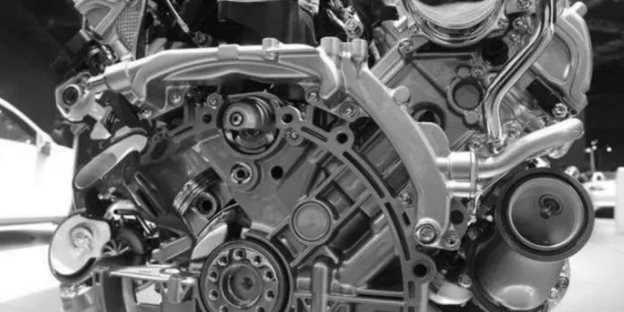The term “all aluminum” is nothing novel in the realm of automobiles. The Jaguar models are very typical. In addition, the Weilai ES8 (commissioned by Jianghuai) has an all-aluminum body, and it is not the first pure electric car to do so. It’s clear that aluminum has long been a reliable component in vehicles. Aluminum engines are becoming more common, but their benefits are not yet well understood by the average automobile consumer. The automobile (gasoline) engine may be broken down into two materials: “cast iron” and “cast aluminum,” which many people will notice when inspecting the layout of a new car. The only discernible variation between them is in the materials used. As compared to cast iron engines, what benefits do those made entirely of aluminum offer?

All Aluminum Engine vs. Cast Iron Engine: Which is Better
Cast aluminum’s superior heat dissipation performance is a major plus.
It is common knowledge that an automobile engine consists of a cylinder head on top, a cylinder block in the center, and an oil pan underneath. Aluminum has replaced steel as the material of choice for cylinder heads. The reason for this is because the metal aluminum itself is better at dissipating heat than cast iron. The cylinder head houses the intake and exhaust valves, as well as the valve guides, which are all part of the combustion chamber.
The intake and exhaust cams and valve guides are splashed with oil as the crankshaft turns, which lubricates and cools the moving elements of the engine. One problem is the high temperature, and another is the lack of pressure lubrication. Aluminum cylinder heads, which improve engines’ ability to dissipate heat, are becoming more common as the necessary manufacturing technology improves.
Aluminum cylinder blocks, like aluminum cylinder heads, are in high demand due to their excellent heat dissipation and high explosion resistance. High heat and high heat dissipation needs are inherent to engine operation. Poor heat conductivity in the cylinder block material is a common cause of cylinder explosions and premature cylinder failure. By using aluminum for cylinder blocks, not only is the issue of fundamental heat dissipation resolved, but the likelihood of aberrant combustion is also reduced. Aluminum cylinder blocks may utilize lesser quality fuel while maintaining the same compression ratio as cast iron cylinder blocks.
The benefit of aluminum engines is their light weight, which aids in heat dissipation
The lightweight nature of cast aluminum engines is a major benefit in addition to heat dissipation. Lightweighting is a hot subject in the industry of automobile parts, as is common knowledge.
In this regard, cast aluminum engines likely benefit in the following ways. The benefits and drawbacks of conventional cast iron engine components will be discussed next. The benefits of aluminum are comparable to the drawbacks of cast iron, especially in terms of heat dissipation and weight, as we have seen.
Cast iron’s benefits include increased durability and resilience to extreme heat and pressure.
The cast iron engine block offers more room for power enhancement and modification due to its higher thermal load capacity (resistance to high temperatures and pressures). The cast-iron Mitsubishi EVO’s renowned red-head 4G63 turbocharged engine is a good example. The power output of a modified vehicle may be simply adjusted by the owner to 500+, 600+, or even 1000 horsepower. The 4G63 has become an indelible feeling in the minds of motoring enthusiasts because to its powerful engine.
Cast iron’s high resistance to corrosion is an advantage
Cast iron engines have the benefit of being resistant to corrosion, which is reflected in their strength. The high temperature of the cylinder block during combustion action necessitates inherently high cooling needs, and the coolant channels on the engine cylinder block help provide this need in addition to the oil channels. Aluminum has worse corrosion resistance than cast iron in high-temperature, high-pressure cylinders because antifreeze is more likely to react chemically with materials made of more active metal characteristics. This is why cast iron cylinder blocks are favored for usage in particular types of very turbocharged turbine engines.
Cast iron’s advantages include its inexpensive price
Last but not least, cast iron’s apparent benefit is its cheap cost, which is the primary reason why many automakers use cast iron engines. Nodular graphite, an alloy of components like iron, carbon, and silicon, makes up the bulk of cast iron. Cast iron’s mechanical qualities may be greatly enhanced by using spherical graphite, which is also simple to shape and inexpensive.
Volvo d13 cylinder head material cast iron or aluminum
The Volvo D13 cylinder head is made of cast iron, not aluminum. This choice of material is due to the engine’s need to withstand high combustion pressures and extreme thermal loads common in heavy-duty diesel applications. Cast iron offers superior strength, durability, and heat resistance compared to aluminum, making it ideal for long-haul commercial engines like the D13. While aluminum heads are lighter and more common in passenger vehicles, cast iron provides the robustness and longevity required for the demanding conditions faced by Volvo’s D13 truck engines.
Summary
As compared to aluminum, the cast iron that has been used for engines for decades is less susceptible to corrosion. But, both materials have their benefits and drawbacks. The benefits of cast iron engines, such as cheap cost, corrosion resistance, longevity, and increased stability, are more readily apparent now than they were before the rise in popularity of small displacement turbocharged engines. While aluminum engines are more expensive, they are lighter and have better heat conduction and heat dissipation capabilities. In order to counteract the drawbacks of both materials and strike a good balance between technology and cost, most automakers today retain the use of cast iron for the engine cylinder block while replacing the cylinder head with aluminum alloy materials with obvious advantages, as seen in Volkswagen’s Maiteng and Golf models.

